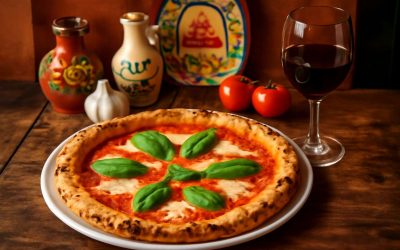
If you’re looking for a place to eat Italian food in New York, the choices are many and varied. There are upscale, celebrity-driven restaurants in Manhattan and Brooklyn; sleek trattorias and regionally inspired spots that have had a love affair with the city for decades.
Some of these restaurants are still serving Italian-American cuisine while others have shifted their focus to other, more contemporary styles of food. These establishments have all contributed to the direction Italian food has taken in this country, and some of the dishes they’ve introduced are the ones that make it into our everyday kitchens.
The history of Italian restaurants in America is a fascinating one. From the port cities and Bohemian enclaves of the early 20th century to the emergence of spaghetti and meatballs, the story is one of migration and change.
It’s not uncommon for an American to visit an Italian restaurant more than once a day, whether it’s for breakfast, lunch or dinner. And, like bars in Italy, many of these restaurants are known for their coffee options as well, so it’s a great place to grab a quick drink and get your morning started.
An enoteca is also an excellent way to sample local wine. Traditionally, an enoteca would just serve glasses of wine, but in recent years they’ve become much more popular for serving small dishes to go with your drink.
A pizzeria, on the other hand, is a traditional Italian eatery that serves pizzas and pastas. This is often a popular choice for both locals and tourists alike, especially in the crowded pizza districts of Rome and Milan.
Another common choice is a gelateria, where you can try all kinds of sweet and savory treats. You can even pick up some of the more traditional Italian ingredients for your own home cooking, such as polenta or ricotta cheeses.
In fact, Italian restaurants have had a greater impact on the development of the Italian-American cuisine than most people think. They have codified recipes, introduced foods that became staples in American homes and created dishes that Americans have adapted to their own dining preferences.
The earliest restaurants in the United States were cheap, table d’hote places that served Italian fare to the working class. As the economy grew in the late 19th century, this type of eatery became an increasingly important part of the food scene.
As more and more immigrants came to the United States, they brought with them a love for Italian cooking. These immigrants were the first to introduce pasta, veal, and other Italian preparations to American cooks. They introduced the osso buco, veal Parmesan, Caesar salad, and tiramisu that we all know so well.
These were the defining meals in an early Italian-American culture that had never had an established national cuisine before. While there were plenty of other cuisines to choose from, these restaurants represented the most familiar of what Italian cuisine had to offer.
The history of Italian restaurants in America is essentially the history of the American experience, and it’s a fascinating story. It is also a fascinating study of how food and culture can influence the world around us, and this book tells the story in an engaging fashion.



0 Comments